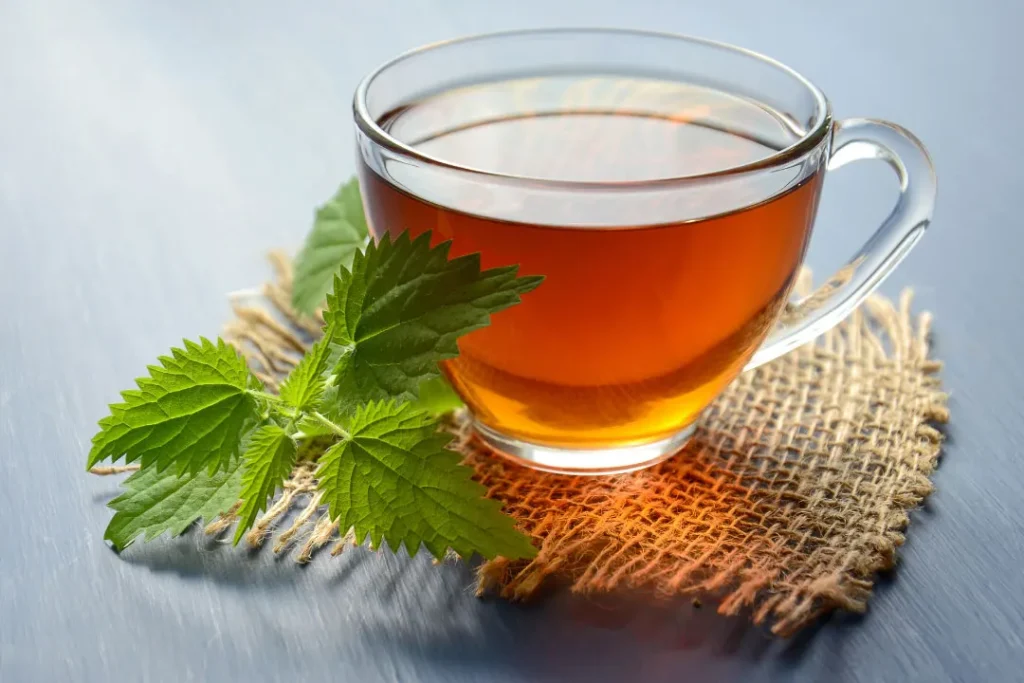Galium aparine, also referred to as clover, is a medicinal herb well known for its therapeutic uses, particularly in conventional medicine. To better understand its potential applications in health and wellness, scientists continue to investigate its distinctive phytochemistry, health benefits, and properties.
You May Also Like:
5 Great Nootropic Herbs for Focus and Mental Clarity
5 Great Nootropic Herbs for Energy, Focus, and Productivity
Clivers: Benefits, Dosage, Side Effects, Drug Interactions, and Other Important Information is an original (NootropicsPlanet) article.
Nature of Clivers
Clivers is a perennial herb that is indigenous to Europe, North America, and Asia and is a member of the Rubiaceae family. Clivers has other common names, such as Cleavers, Goosegrass, and Catchweed. It can be identified by its square stems, narrow, whorled leaves, and tiny hooked hairs that enable it to cling to passing creatures.
Clivers’ high phytochemical content is responsible for their therapeutic potency. Iridoid glycosides, asperuloside, phenolic acids, flavonoids, anthraquinones, tannins, coumarins, and alkaloids are some of these constituents, all of which contribute to the variety of therapeutic effects.
Health Benefits of Clivers
Historically, clivers has been used to treat a variety of medical conditions. Many of these conventional uses have been studied further by contemporary research, confirming it has potential therapeutic benefits.
- Support for the Lymphatic System: Clivers is best known for its lymphatic system support. It has been used as a lymphatic tonic, with the theory that it will increase lymphatic system activity and aid in toxin removal.
- Diuretic Properties: Clivers has strong diuretic properties that help our body flush out extra fluids. If you are prone to conditions such as edema or urinary tract infections, you might benefit from this supplement.
- Anti-inflammatory and Antioxidant Properties: The antioxidant and anti-inflammatory properties of Clivers are influenced by the presence of flavonoids and phenolic compounds. These substances can lessen oxidative stress- and inflammation-related damage.
Chemistry of Clivers
Clivers has a diverse range of therapeutic uses because of its rich phytochemical profile. Iridoid glycosides, anthraquinones, flavonoids, tannins, coumarins, and alkaloids are some of the main components.
Asperuloside, the most widespread glycoside, is well known for boosting the immune system. Anthraquinones are involved in the laxative and antimicrobial properties of Clivers, whereas flavonoids and phenolic compounds have anti-inflammatory and antioxidant properties. Alkaloids are linked to a variety of biological activities, such as antimicrobial and analgesic effects, while tannins have astringent properties and coumarins have anticoagulant and anti-inflammatory effects.

Physiological Properties of Clivers
The constituent compounds of Clivers and their interactions with biological substances are what cause the positive effects on your body.
- Support for the Lymphatic System: Although the precise mechanism is still unknown, Clivers is believed to stimulate the lymphatic system, which aids in detoxification. Given its well-known immune-boosting properties, the glycoside asperuloside could be the reason behind this.
- Diuretic Effects: Clivers’ diuretic effects are brought on by the presence of flavonoids. Flavonoids can boost the glomerular filtration rate and renal blood flow, which increases urine production.
- Anti-inflammatory and Antioxidant Properties: Flavonoids and phenolic compounds in Clivers have strong anti-inflammatory and antioxidant properties. Cells in the body are shielded from oxidative stress and inflammation by their ability to scavenge toxins in the body, and lower inflammatory mediators.
Optimal Dosage of Clivers
Clivers can be taken as a tincture, tea, or capsule. The right dosage can differ depending on your age, overall health, and the intended therapeutic use, among other things.
It is advised to steep 2-3 grams of dried herb in a cup of boiling water for 10 to 15 minutes when making Clivers tea. 2-4 ml of Clivers tincture can be taken daily. Follow the manufacturer’s directions carefully when taking a capsule.
Any new supplement regimen, including Clivers, must be discussed with your healthcare professional before beginning, regardless of the format.


Side Effects
Although Clivers is considered safe for the majority of people, you may still experience some I it is consumed in large quantities, these side effects can include diuresis, skin irritability, and gastrointestinal issues. Before using Clivers, pregnant women, nursing mothers, and those with pre-existing medical conditions should speak with their doctor.


Potential Substance Interactions
In terms of possible drug interactions, Clivers’ diuretic effect can increase the possibility of it interacting with diuretic medications. It can intensify these drugs’ effects, resulting in increased urine production and electrolyte imbalances. As a result, Clivers should only be used with caution if you are receiving diuretic therapy.
Responsible Use of Clivers
Like any dietary supplement, you need tp use clivers resposibily in order to get the most health benefits. . This includes following directions regarding dosage, being aware of any possible side effects or drug interactions, and seeking medical advice prior to using the medication.
Clivers:
Conclusion
Clivers has many health benefits, but it is always important to be aware of the risks when it comed to taking a supplement that still needs further research. Despite this fact, clivers can be very helpful if you need a supplement to aid you with anti-inflammatory health. If you like to drink tea, you can even drink it daily as a tea infused supplement! Like any supplement, you should always speak to your doctor first before trying it, just to make sure it is safe for you to use.
References:
- The Health Benefits of Clivers. Retrieved from: https://www.webmd.com/vitamins/ai/ingredientmono-171/cleavers
- Understanding the Phytochemistry and Therapeutic Applications of Clivers. Retrieved from: https://www.ncbi.nlm.nih.gov/pmc/articles/PMC6261187/
- New research sheds light on the traditional use of Clivers Retrieved from: https://yogaplantbase.com/extended-posts/f/new-research-sheds-light-on-the-traditional-use-of-clivers?blogcategory=Herbal+Medicine
Important Note: The information contained in this article is for general informational purposes only, and should not be construed as health or medical advice, nor is it intended to diagnose, prevent, treat, or cure any disease or health condition. Before embarking on any diet, fitness regimen, or program of nutritional supplementation, it is advisable to consult your healthcare professional in order to determine its safety and probable efficacy in terms of your individual state of health.
Regarding Nutritional Supplements Or Other Non-Prescription Health Products: If any nutritional supplements or other non-prescription health products are mentioned in the foregoing article, any claims or statements made about them have not been evaluated by the U.S. Food and Drug Administration, and such nutritional supplements or other health products are not intended to diagnose, treat, cure, or prevent any disease.
